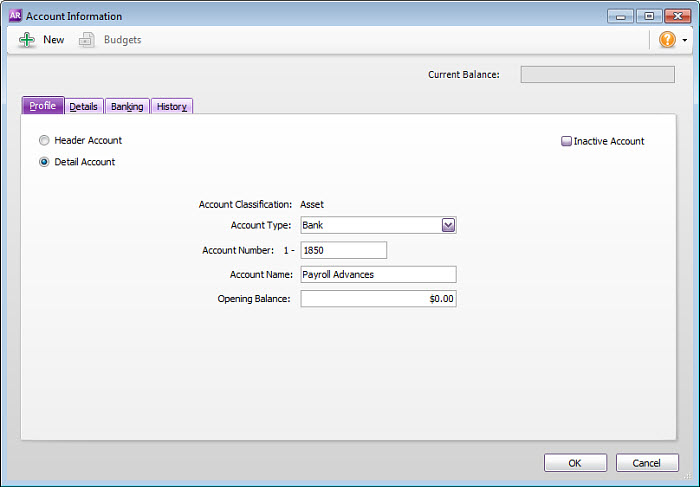You are viewing an old version of this page. View the current version.
Compare with Current View Page History
« Previous Version 2 Next »
https://help.myob.com/wiki/x/dY2O
How satisfied are you with our online help?*
Just these help pages, not phone support or the product itself
Why did you give this rating?
Anything else you want to tell us about the help?
This topic explains how to pay an employee a wage advance then withhold this amount from a future pay to recoup the advance.
This is achieved by using a wage category to pay the advance, and a deduction category to repay the advance. Both these payroll categories are linked to an asset account which tracks all amounts advanced, repaid, and outstanding.
Let's take you through the details.
To track wage advances, set up the following:
- an asset account
- a payroll wages category
- a payroll deductions category
- Create an asset account with the Account Type set to Bank. This account will be used to keep track of how much you have advanced, and how much is repaid.

- Create a wages category. This category will allow you to include the advance on the employee's pay.
- Select Salary for the Type of Wages.
- Select Optional Account and choose the asset account created above.
- Click Employee and select the employee who is being paid the advance.
- In our example we'll click Exempt and select the PAYG Withholdings category so the advance is tax-free.

- Create a deductions category. This category will allow you to withhold the advance from the employee's future pay.
- Select the asset account created above for the Linked Payable Account.
- Set the Calculation Basis to User-Entered Amount per Pay Period.

FAQs
No, the taxation laws do not provide for the amount or how to determine the amount of an insurance payout. The amount the insurer pays is determined in accordance with the terms and conditions of your insurance policy.
If you pay an excess to your insurer, you do not include the amount of the excess at G11 on your BAS. One way of accounting for the excess would be to subtract it from the gross payment (that is, the insurance payout amount before the excess is deducted by the insurer) and allocate it to an expense account with an N-T tax code in a Receive Money transaction.

 Yes
Yes
 No
No
 Thanks for your feedback.
Thanks for your feedback.